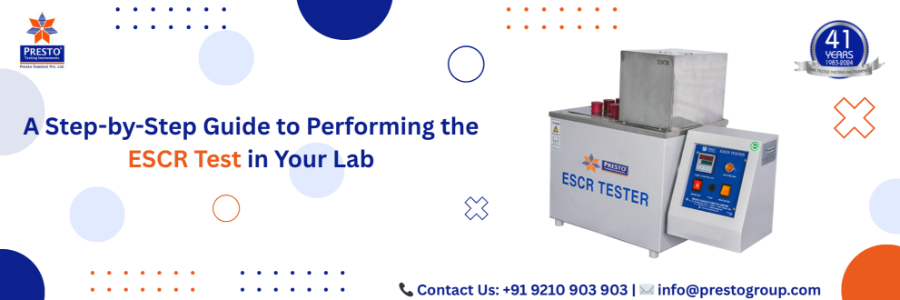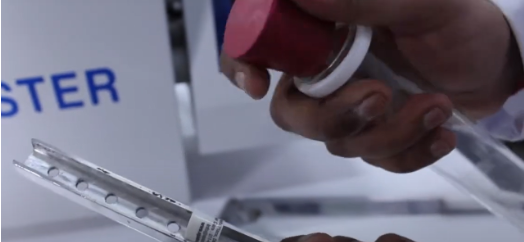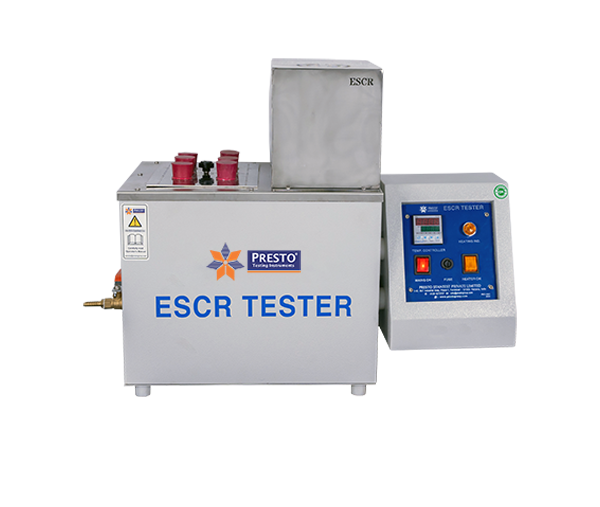

Hey folks, if you are in the world of plastics—-think bottles, pipes, or medical gear—you’ve probably come across the ESCR test. It is short for Environmental Stress Cracking Resistance, and it’s your go-to for figuring out if your plastic products can handle tough conditions like chemicals or stress without cracking. Whether you’re testing PET bottles or medical components, this test is a lifesaver. In this guide, I’ll walk you through the ESCR test procedure, the gear you need (like an ESCR tester), why it matters, and even throw in a table and some FAQs to clear things up. Let’s get started!
The ESCR test full form is Environmental Stress Cracking Resistance, and it’s all about seeing how tough plastics are when the going gets rough. imagine a plastic bottle holding harsh cleaning chemicals or a medical device soaked in disinfectant. If it cracks under pressure, you’ve got a problem—-leaks, safety issues, you name it. That’s where environmental stress testing comes in, checking if plastics can stand up to chemicals, heat, or mechanical stress.
Fun fact: environmental stress cracking is behind 15-30% of plastic failures out in the real world. Even super-strong plastics can crack if exposed to the wrong stuff, like detergents or oils, over time. This test is a big deal for industries like packaging (hello, Stress Crack test for PET bottles), automotive, and medical, where the ESCR full form in medical contexts ensures devices like syringes or IV bags don’t fail when exposed to disinfectants.
Environmental stress cracking can lead to material failure in products like bottles, containers, and pipes even if the material hasn’t reached its mechanical strength limits. This makes ESCR testing equipment indispensable in quality assurance for industries that manufacture plastic packaging, chemical containers, and medical devices.
Applications:
The ESCR test method for plastic bottles involves subjecting molded specimens to a combination of mechanical strain and a stress-inducing reagent in a controlled environment.
Here’s a detailed ESCR test procedure to help you conduct the test in your lab using an ESCR testing machine.
Step 1: Prepare the Test Specimens
Step 2: Set Up the ESCR Testing Equipment

Step 3: Conduct the Test
Step 4: Analyze the Results
An ESCR testing machine is a specialized apparatus designed to simulate harsh environmental conditions. Key features of a high-quality ESCR tester include:

Popular manufacturers like PrestoGroup offer ESCR testers with these features. The ESCR tester price varies based on specifications, such as the number of test stations (Mostly 6-8) and, temperature range, and additional features like digital controllers or advanced data analysis tools. Prices can range from a few thousand to tens of thousands of dollars, depending on the model and customization.
The ESCR test method for plastic bottles is widely used in the packaging industry to ensure bottles can withstand chemicals and mechanical stress. Other applications include:
Automotive: Testing fuel tanks and hoses for resistance to fuels and oils.
Medical: Ensuring medical device components resist disinfectants.
Pipes and Containers: Evaluating durability in harsh environments like underground pipelines.
| Condition | Density (g/cm³) | Temperature (°C) | Reagent | Application |
| Condition A | 0.910–0.925 | 50 | Detergent | Low-density polyethylene |
| Condition B | >0.925 | 50 | Wetting agent | High-density polyethylene |
| Condition C | Variable | 70 | Chemical | Accelerated testing for high ESCR materials |
| Custom | Variable | Up to 250 (silicone oil) | Specific chemical | Specialized applications (e.g., PET bottles) |
Table: Standard ESCR test conditions as per ASTM D1693 and typical applications.
1. What’s the ESCR test full form?
It’s Environmental Stress Cracking Resistance, a test to see if plastics can handle chemicals and stress without cracking.
2. How do you do the ESCR test for plastic bottles?
The ESCR test method for plastic bottles involves notching a plastic sample, bending it, and soaking it in a chemical (like a detergent) at a set temperature. You watch for cracks to measure the material’s toughness.
3. How much is an ESCR tester?
The ESCR tester price varies. Basic models might cost a few thousand dollars, while high end ones with extra features could run higher. Contact suppliers like Pacorr or Presto for quotes.
4. Why is the Stress Crack test for PET bottles important?
The Stress Crack test for PET bottles ensures bottles can handle chemicals or stress without leaking, keeping products safe and reliable.
The ESCR test is your secret weapon for making sure plastic products can take a beating from the environment. With the right ESCR testing machine and a solid ESCR test procedure, you can spot weak materials, meet industry standards, and keep your customers smiling. Whether you’re working on PET bottles, medical devices, or industrial parts, this test is a must. Curious abut equipment or costs? Hit up trusted suppliers like Pacorr or Presto to learn more.
Get a high-quality ESCR tester at the best price from Presto. Our machines are perfect for testing plastic bottles, packaging, and more.
Call Now: +91 9210 903 903 Visit: https://www.prestogroup.com
Contact us today to know the latest ESCR tester price and choose the right machine for your lab.
Connect with us for your business enquiries. Generally, we respond within one or two working days.